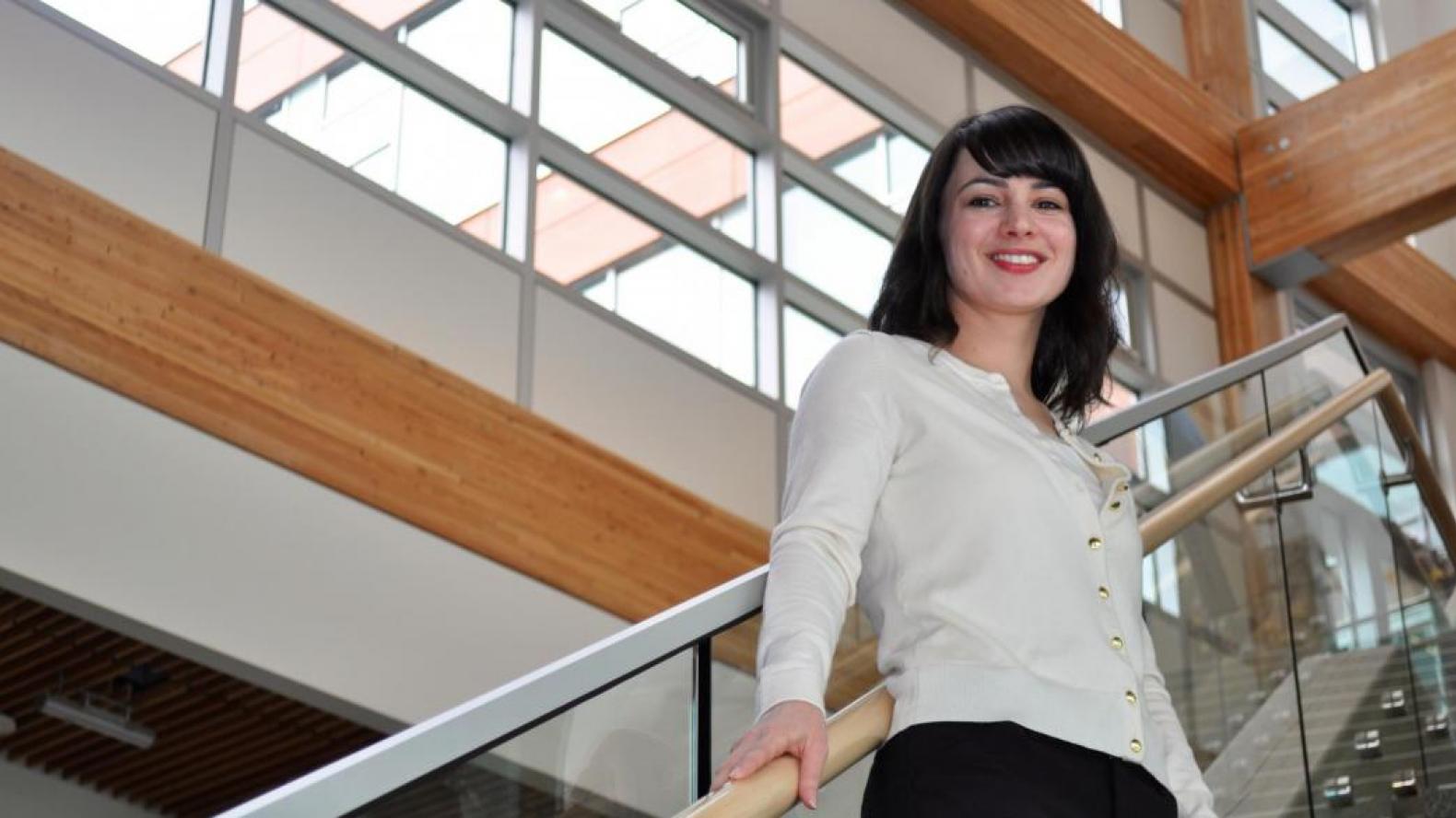
Jeffrey Preiss
In the experiment that is the Centre for Interactive Research in Sustainability building, a lot has gone right and as planned. Over the past year, grad student Laura Fedoruk has also been researching some of CIRS’ shortcomings.
For students like Laura, the CIRS building is one giant piece of research equipment. “Learning from its operation and potential retrofits provides opportunities to use that knowledge for upgrading existing buildings and designing future ones.”
UBC is unique as a university. As students quickly learn when they submit their first papers, not getting the grade they expected isn’t a bad thing. It’s an opportunity to grow, develop, learn, and improve.
As a living lab, where new ideas and technologies are tested, not getting things exactly right initially are opportunities to learn and improve technologies and infrastructure for future products and our partners.
Two particular systems have informed Laura’s work.
Water-heating: the solar hot-water system
CIRS uses a solar hot water system that preheats water used in the building. The use of this system results in conventional energy savings and reduced green-house gas emissions.
Laura’s research discovered that the system had been commissioned for continuous operation, operating at night. That meant that at night the building was losing thermal energy which decreased overall building performance.
Heat exchange: Earth and Ocean Sciences Building
Waste heat produced in labs in the neighbouring Earth and Ocean Sciences building is captured and carried through pipes to the CIRS building, where it is upgraded and used to heat CIRS. Excess heat from CIRS is sent back to Earth and Ocean Sciences to preheat incoming ventilation air. The idea is to have a symbiotic relationship between the two buildings, working as a mini-ecosystem to harvest and return to UBC more energy than CIRS consumes from the grid.
Laura’s research showed that the system was not working exactly as planned and that significantly less heat than anticipated was being sent to Earth and Ocean Sciences from CIRS.
The Future
Both of these examples, and others, provided Laura with ample research possibilities to complete her Masters thesis entitled “'Smart energy systems and networked buildings: examining the integrations, controls, and experience of design through operation.”
“I would like to take the understanding I have gained about building systems and processes through my research and apply it in industry,” states Laura who graduates in May 2014 with a Masters degree in science.
As for the CIRS building, Laura hopes her research informs other building designs and operations at UBC and beyond. “It would be wonderful to see what I learned embraced and built upon by researchers, universities, and industry professionals. Implementing and building on lessons is what being a living lab is all about.”
May 12, 2014